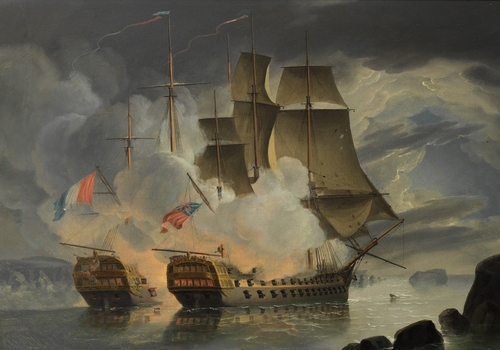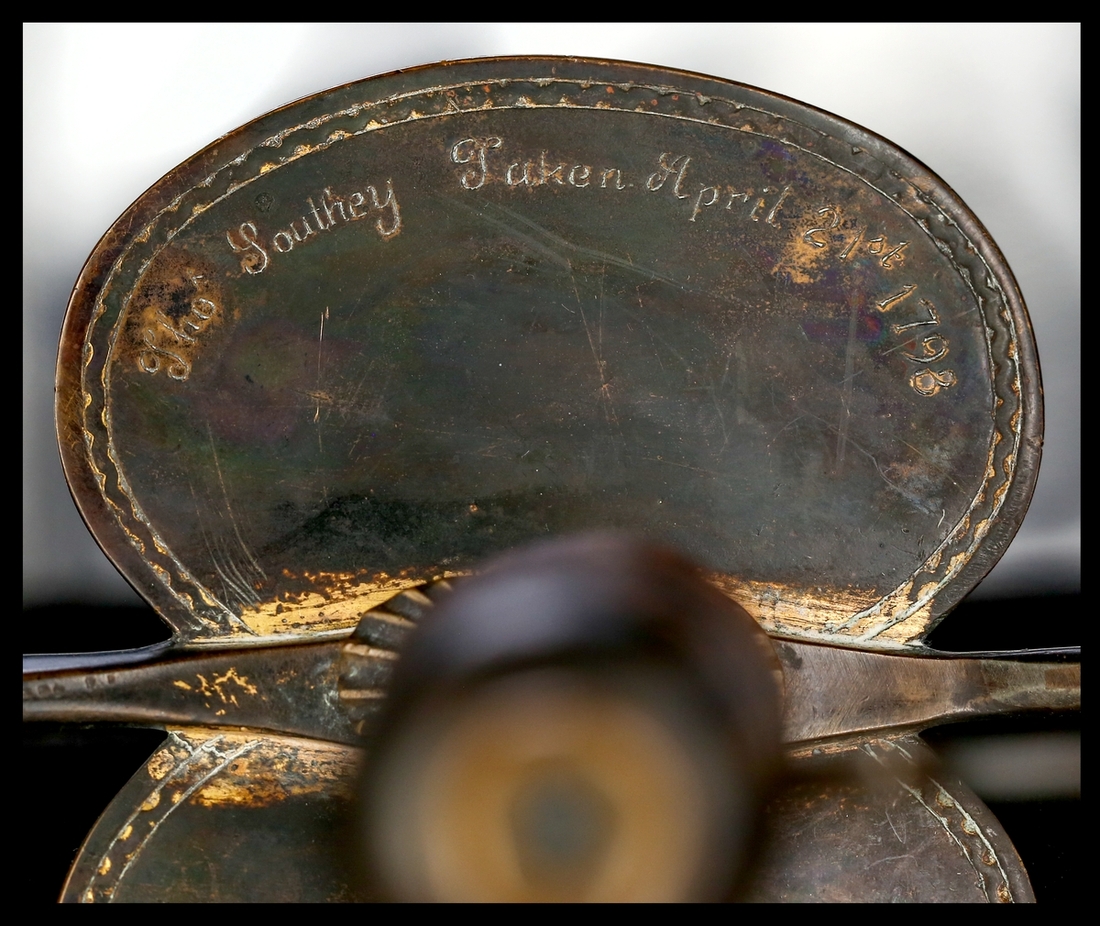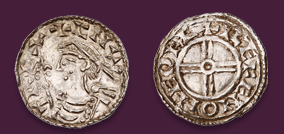Auction: 25003 - Orders, Decorations and Medals
Lot: 98
(x) "The meeting of two ships of the line is a circumstance of rare occurrence, and its decision in our favour a brilliant ornament to our naval history" - the historically interesting French naval officer's sword taken by Midshipman T. Southey in the aftermath of the Battle of the Raz de Sein, 21 April 1798, a rare example of a single-ship action between two 74-gun ships-of-the line during the French Revolutionary Wars and a hard-fought battle where Captain Alexander Hood was killed and Southey, along with 60 of his shipmates, was wounded
European smallsword, of late-18th Century manufacture, with a triangular steel blade and brass 'shell'-type guard, the grip bound in brass or copper wire, the underside of the guard attractively and contemporarily engraved: Thos. Southey Taken April 21st 1798, the tip of the blade with a very old break, traces of gilt to guard, generally good fine
Thomas Southey was born on 1 December 1777 and entered the Royal Navy in 1789 at the tender age of twelve years old. In addition to his participation in several large fleet actions (including the battles of Cape St. Vincent and Copenhagen) he is also known for being present as a Midshipman aboard the 74-gun H.M.S. Mars when she captured the French 74-gun Hercule on 21 April 1798 at the Battle of the Raz de Sein, off the coast of Brest.
Under the command of Captain Alexander Hood, Mars was part of Admiral Lord Bridport's blockading force when unidentified sails were spotted: Hood's vessel, along with several others, were sent to investigate and realised one was the newly-commissioned Hercule, Captain Louis Lheritier. Whilst the other French ships escaped, Hercule failed to do so (the tide being against her as she attempted to sail through the narrow Raz de Sein passage) and therefore Lheritier decided to anchor and give battle. At 9.15 p.m., Mars came up with Hercule and so commenced a broadside-to-broadside pounding match between the two equally balanced ships. Astonishingly, for more than an hour the British and French fired directly into one-another, so close that the larger maindeck guns could not be run out but had to be fired from inside the ships: fighting in darkness, the noise, smoke and general atmosphere must have been beyond comprehension. Though both vessels were of almost exactly the same size and weight of firepower, Hood's men were better trained that Lheritier's and this was the deciding factor: the British fired faster, roundshot tearing gaping holes in Hercule's side until gunports were totally blown away and casualties amongst the French began to build. Hood, standing on the quarterdeck, was hit in the thigh by a musket ball which severed his femoral artery: carried below, he died just at the close of the action and command developed on Lieutenant William Butterfield.
Realising he could not win the gunnery duel, Lheritier ordered his men to board Mars - but first one, then a second, boarding attempt were repulsed with heavy losses and the French captain was himself wounded twice whilst leading the assaults. Upon the defeat of this second attempt, taking into account his casualties and seeing further British ships coming up to support Mars, Lheritier surrendered at 10.30 p.m. and handed his sword to Lieutenant Butterfield - perhaps it was at this time that Southey came into possession of a similar sword from a more junior French officer. Casualties were horrific, even by the standards of the day: Mars had lost 22 killed (including Captain Hood), 60 wounded and eight missing, and Hercule counted at least 290 killed and wounded out of a crew of 680. In the aftermath of the action Southey was promoted Lieutenant, and this sword was likely a memento of a hard-fought action he would never forget.
Thomas Southey went on to see further service as a Lieutenant aboard the 74-gun Bellona at the Battle of Copenhagen (2 April 1801) but after this his career stalled: court-martialled for insubordination in the West Indies, he was made Commander on 1 April 1811 but never commanded his own ship. Retiring from the Royal Navy at the end of the Napoleonic Wars, like many unemployed Naval officers he drifted through several other occupations including farming and Customs & Excise; he died on 30 April 1838, at sea, during a voyage home from Demerara. Interestingly, he was a younger brother of Robert Southey (1774 - 1843), the poet, historian, essayist and author best-known for holding the position of Poet Laureate for 30 years and writing 'The Life of Nelson', first published in 1813 and rarely out of print since. Perhaps Thomas helped advise his brother on some of the finer elements of Naval strategy and seamanship.
Subject to 5% tax on Hammer Price in addition to 20% VAT on Buyer’s Premium.
Estimate
£400 to £600
Starting price
£320











